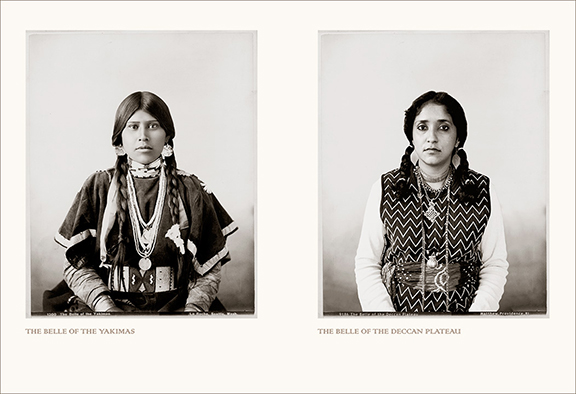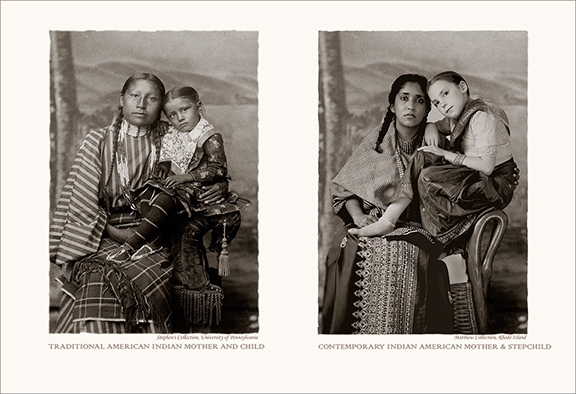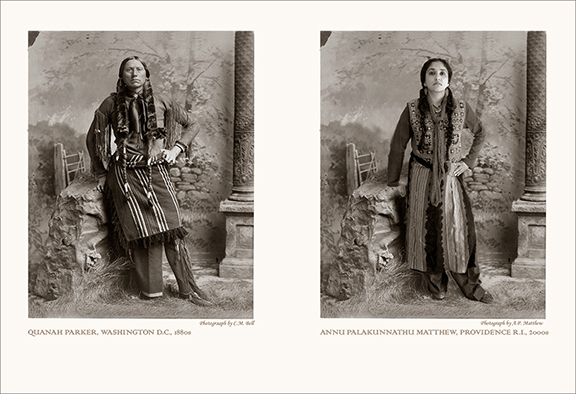Annu Palakunnathu Matthew, "An Indian From India," 2001–2003
 ANNU PALAKUNNATHU MATTHEW
ANNU PALAKUNNATHU MATTHEW
The Belle of the Yakimas/The Belle of the Deccan Plateau, 2001–2003
From the series "An Indian from India"
Archival pigment print, unique
Image: 24 x 30 inches; Framed: 25 x 31 inches
Courtesy Annu Palakunnathu Matthew and sepiaEYE
Original Photo Courtesy: University of Pennsylania Museum of Archaeology and Anthropology
 ANNU PALAKUNNATHU MATTHEW
ANNU PALAKUNNATHU MATTHEW
Traditional American Indian Mother and Child/Contemporary Indian American Mother and Stepchild, 2001–2003
From the series "An Indian from India"
Archival pigment print, unique
Image: 24 x 30 inches; Framed: 25 x 31 inches
Courtesy Annu Palakunnathu Matthew and sepiaEYE
Original Photo Courtesy: University of Pennsylania Museum of Archaeology and Anthropology
 ANNU PALAKUNNATHU MATTHEW
ANNU PALAKUNNATHU MATTHEW
Quanah Parker, Washington D.C., 1880s/Annu Palakunnathu Matthew, Providence R.I., 2000s, 2001–2003
From the series "An Indian from India"
Archival pigment print, unique
Image: 24 x 30 inches, Framed: 25 x 31 inches
Courtesy Annu Palakunnathu Matthew and sepiaEYE
Original Photo Courtesy: The Library of Congress, Washington, DC
CURRENTLY ON VIEW: Stamp 1st Floor, West Study Lounge
In this series, Annu Palakunnathu Matthew explores ethnicity, immigration, and the colonial gaze. Each panel juxtaposes two images: a late-nineteenth photograph of Native Americans and a reenactment of that historical image with Matthew’s body taking the place of the original subject. The series was inspired by Matthew’s experience, as an immigrant living in the United States, of constantly being asked where she was “really from.” It explores the role of photography in fixing and perpetuating stereotypes. As the artist explains, “I’m talking about the imbalance of power between the subject and the photographer. That’s one reason that I turned the camera on myself. Since the portrait is of me, I am in control of how I am being represented. It was a way to hold hands with Native Americans and reverse that gaze.”
Stamp Gallery, 2016
